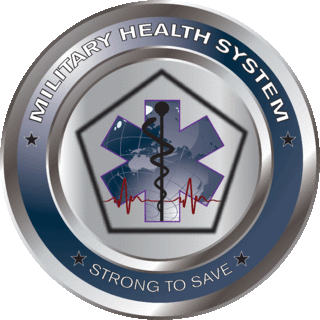The military housing privatization initiative (MHPI) was established by the United States Congress in 1996 as a tool to help the military improve the quality of life for its service members by improving the condition of their housing. The MHPI was designed and developed to attract private-sector financing, expertise and innovation to provide necessary housing faster and more efficiently than traditional military construction processes would allow. The Office of the U.S. Secretary of Defense has delegated to the military services the MHPI and they are authorized to enter into agreements with private developers selected in a competitive process to own, maintain and operate family housing via a fifty-year lease.
MHPI addresses two significant problems concerning housing for military-service members and their families: (1) the poor condition of housing owned by the U.S. Department of Defense (DOD), and (2) a shortage of quality affordable private housing. Under the MHPI authorities, DOD works with the private sector to revitalize military family housing through a variety of financial tools-direct loans, loan guarantees, equity investments, conveyance or leasing of land and/or housing/and other facilities. Military service members receive a basic allowance where they can choose to live in private sector housing, or privatized housing. [1]
| Military service | Program name |
|---|---|
| United States Army | Residential Communities Initiative [2] |
| United States Air Force | USAF Housing Privatization [3] |
| United States Navy and United States Marine Corps | Public Private Venture [4] |

The United States Department of Housing and Urban Development (HUD) is one of the executive departments of the U.S. federal government. It administers federal housing and urban development laws. It is headed by the Secretary of Housing and Urban Development, who reports directly to the President of the United States and is a member of the president's Cabinet.
Total quality management (TQM) consists of organization-wide efforts to "install and make permanent climate where employees continuously improve their ability to provide on demand products and services that customers will find of particular value." "Total" emphasizes that departments in addition to production are obligated to improve their operations; "management" emphasizes that executives are obligated to actively manage quality through funding, training, staffing, and goal setting. While there is no widely agreed-upon approach, TQM efforts typically draw heavily on the previously developed tools and techniques of quality control. TQM enjoyed widespread attention during the late 1980s and early 1990s before being overshadowed by ISO 9000, Lean manufacturing, and Six Sigma.
The term New Frontier was used by Democratic presidential candidate John F. Kennedy in his acceptance speech in the 1960 United States presidential election to the Democratic National Convention at the Los Angeles Memorial Coliseum as the Democratic slogan to inspire America to support him. The phrase developed into a label for his administration's domestic and foreign programs.
We stand today on the edge of a New Frontier—the frontier of the 1960s, the frontier of unknown opportunities and perils, the frontier of unfilled hopes and unfilled threats. ... The pioneers gave up their safety, their comfort, and sometimes their lives to build our new west. They were determined to make the new world strong and free - an example to the world. ... Some would say that those struggles are all over, that all the horizons have been explored, that all the battles have been won. That there is no longer an American frontier. ... And we stand today on the edge of a new frontier, the frontier of unknown opportunities and perils. ... Beyond that frontier are uncharted areas of science and space, unsolved problems of peace and war, unconquered problems of ignorance and prejudice, unanswered questions of poverty and surplus. ... I'm asking each of you to be pioneers towards that New Frontier. My call is to the young in heart, regardless of age. ... Can we carry through in an age where we will witness not only new breakthroughs in weapons of destruction, but also a race for mastery of the sky and the rain, the ocean and the tides, the far side of space, and the inside of men's minds? ... All mankind waits upon our decision. A whole world waits to see what we shall do. And we cannot fail that trust, and we cannot fail to try.

The United States Transportation Command (USTRANSCOM) is one of eleven unified combatant commands of the United States Department of Defense. The command is located at Scott Air Force Base, Illinois, and was established in 1987.

The Defense Finance and Accounting Service (DFAS) is an agency of the United States Department of Defense (DOD), headquartered in Indianapolis, Indiana. DFAS was established in 1991 under the authority, direction, and control of the Under Secretary of Defense (Comptroller)/Chief Financial Officer to strengthen and reduce costs of financial management and operations within DOD. DFAS is responsible for all payments to servicemembers, employees, vendors, and contractors. It provides business intelligence and finance and accounting information to DOD decisionmakers. DFAS is also responsible for preparing annual financial statements and the consolidation, standardization, and modernization of finance and accounting requirements, functions, processes, operations, and systems for DOD.

Tricare is a health care program of the United States Department of Defense Military Health System. Tricare provides civilian health benefits for U.S Armed Forces military personnel, military retirees, and their dependents, including some members of the Reserve Component. Tricare is the civilian care component of the Military Health System, although historically it also included health care delivered in military medical treatment facilities. Tricare functions similar to a single-payer healthcare system.
DOD-STD-2167A, titled "Defense Systems Software Development", was a United States defense standard, published on February 29, 1988, which updated the less well known DOD-STD-2167 published 4 June 1985. This document established "uniform requirements for the software development that are applicable throughout the system life cycle." This revision was written to allow the contractor more flexibility and was a significant reorganization and reduction of the previous revision; e.g.., where the previous revision prescribed pages of design and coding standards, this revision only gave one page of general requirements for the contractor's coding standards; while DOD-STD-2167 listed 11 quality factors to be addressed for each software component in the SRS, DOD-STD-2167A only tasked the contractor to address relevant quality factors in the SRS. Like DOD-STD-2167, it was designed to be used with DOD-STD-2168, "Defense System Software Quality Program".

Marine Corps Systems Command (MCSC) is the acquisition command of the United States Marine Corps, made up of Marines, sailors, civilians and contractors. As the only systems command in the Marine Corps, MCSC serves as Head of Contracting Authority and exercises technical authority for all Marine Corps ground weapon and information technology programs. MCSC is headquartered at Marine Corps Base Quantico.

The United States Department of Defense is an executive branch department of the federal government charged with coordinating and supervising all agencies and functions of the government directly related to national security and the United States Armed Forces. The DOD is the largest employer in the world, with over 1.4 million active-duty service members as of 2021. More employees include over 826,000 National Guard and reservists from the armed forces, and over 732,000 civilians bringing the total to over 2.8 million employees. Headquartered at the Pentagon in Arlington, Virginia, just outside Washington, D.C., the DoD's stated mission is to provide "the military forces needed to deter war and ensure our nation's security".
The terms "DOD-STD-2167" and "DOD-STD-2168" are the official specification numbers for superseded U.S. DoD military standards describing documents and procedures required for developing military computer systems. Specifically:

The Military Health System (MHS) is a form of nationalized health care operated within the United States Department of Defense that provides health care to active duty, Reserve component and retired U.S. Military personnel and their dependents.

The Defense Media Activity (DMA) is a United States Department of Defense (DoD) field activity. It provides a broad range of high-quality multimedia products and services to inform, educate, and entertain Department of Defense audiences around the world. The Defense Media Activity is located on Fort Meade, Maryland. DoD field activities are established as DoD components by law, by the President, or by the Secretary of Defense to provide for the performance, on a DoD-wide basis, of a supply or service activity that is common to more than one Military Department when it is determined to be more effective, economical, or efficient to do so. DMA operates as a separate DoD Component under the authority, direction and control of the Assistant to the Secretary of Defense for Public Affairs.

The U.S. Army Public Health Center (APHC) is a United States Army element headquartered at Aberdeen Proving Ground, Maryland, United States. As a forward operating agency of the United States Army Medical Command, APHC is responsible for providing technical support and expertise in the areas of preventive medicine, public health, health promotion, and wellness to military units around the globe.
The United States military formerly excluded gay men, bisexuals, and lesbians from service. In 1993, the United States Congress passed, and President Bill Clinton signed a law instituting the policy commonly referred to as "Don't ask, don't tell" (DADT) which allowed gay, lesbian, and bisexual people to serve as long as they did not reveal their sexual orientation. Although there were isolated instances in which service personnel were met with limited success through lawsuits, efforts to end the ban on openly gay, lesbian, and bisexual people serving either legislatively, or through the courts initially proved unsuccessful.
Initiated in 2013 by the 38th Chief of Staff of the United States Army, Raymond T. Odierno, regionally aligned forces (RAF) provide combatant commands (CCMDs), scalable and tailorable Army capabilities for all requirements, including operational missions, bilateral and multilateral military exercises and security cooperation activities. Army regional alignment is an organizing principle that improves the Army's ability to provide units and capabilities. Regional alignment provides focus and direction for unit training and preparation. RAFs are drawn from the Army Total Force, which includes active United States Army, the Army National Guard and the United States Army Reserve. Corps and divisions are aligned to ensure joint task force capability to every geographic combatant command (GCC). Through regional alignment, the Army maintains its war-fighting skills and complements these skills with language, regional expertise and cultural awareness training.

The Military Construction and Veterans Affairs, and Related Agencies Appropriations Act, 2014 is an appropriations bill that was introduced into the United States House of Representatives during the 113th United States Congress. The bill would appropriate money to various government agencies related to the United States Department of Defense and the United States Department of Veterans Affairs. This funding would be used during fiscal year 2014, which ends September 30, 2014. According to its committee report, "the purpose of the bill is to support our military and their families and provide the benefits and medical care that our veterans have earned for their service." The report also indicated that the Committee had made its decisions with the national debt and budget deficit in mind.

The National Defense Authorization Act for Fiscal Year 2014 is a United States federal law which specifies the budget and expenditures of the United States Department of Defense (DOD) for Fiscal Year 2014. The law authorizes the DOD to spend $607 billion in Fiscal Year 2014.

The Military Construction and Veterans Affairs and Related Agencies Appropriations Act, 2015 is a bill that would make appropriations for fiscal year 2015 for military construction and the United States Department of Veterans Affairs. The bill is considered one of the two easiest appropriations bills to pass each year. The total amount appropriated by the introduced version of the bill is $71.5 billion, approximately $1.8 billion less than fiscal year 2014 due to a decrease in the need for military construction.
The Transition Assistance Program (TAP) is a U.S. Department of Defense (DoD) led program that provides information and training to ensure service members transitioning from active-duty are prepared for their next step in life - whether pursuing additional education, finding a job in the public or private sector, or starting their own business.

The Joint Artificial Intelligence Center (JAIC) was an American organization on exploring the usage of Artificial Intelligence (AI), Network of Networks and AI-enhanced communication for use in actual combat.
![]() This article incorporates public domain material from websites or documents ofthe United States Government .
This article incorporates public domain material from websites or documents ofthe United States Government .